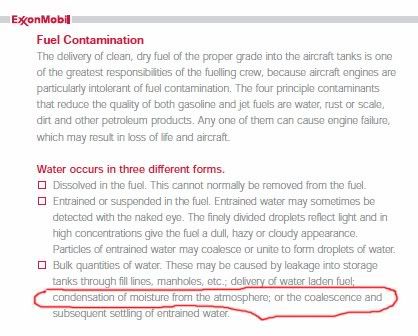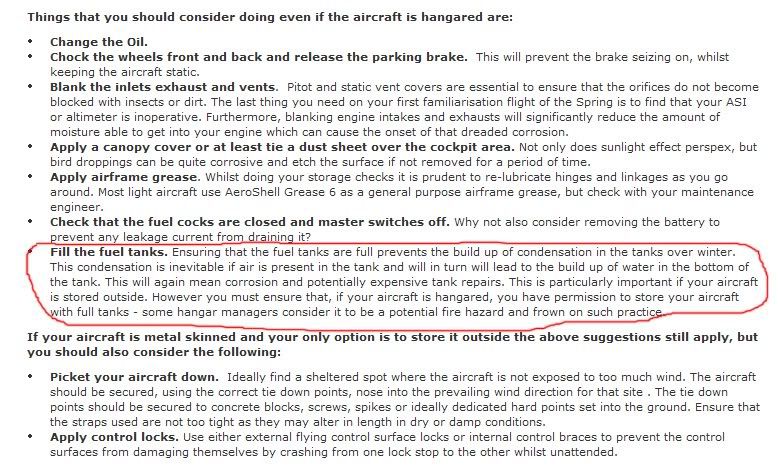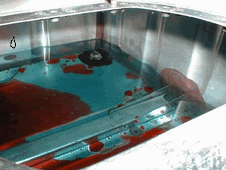Re: full tank vs. empty tank for storage
All this talk about condensation aside for a moment, I want to address the "rust" issue.
First off, there are very few, by comparison with the entire boat population, Steel tanks, or iron, or anything else that rusts. Just to toss some numbers around, there are about 20,000,000 recreational boats in the US, about half of which are powered. The rest are canoes, kayaks sailboats and such. See
http://www.uscgboating.org/assets/1/workflow_staging/Publications/394.PDF
The USCG reports only registered boats which is a little over 12 million. The National Marine Manufacturers Association reports about 20 million, The difference is in boats that are not required to be registered. In many states unpowered boats are not required to be registered, but these are not important to this discussion
Most powered boats in the US do not have steel or ferrous tanks. about half have roto molded polyethylene tanks, PE, plastic if you please, and they do not corrode. The rest have aluminum tanks. Aluminum does corrode, but only under certain circumstances. If left alone, dry, and unpainted aluminum has a natural oxide coating on it that prevents corrosion. Where the problem lies with aluminum tanks is either water is allowed to pool on the top, or collect on the bottom and this dissolves the oxide allowing the aluminum to corrode. You can recognize this immediatly because it looks like a white powder.
Water is not what causes the aluminum to corrode form the inside though. And most of the cases of aluminum tanks corroding form the inside have been due to phase separation of the fuel, that is the alcohol and gas separating into two layers. Yes this attracts water. But what really causes the corrosion are acids that form at the boundary between the alcohol and the gas. These eat the tank from the inside out causing pinholes, and resulting in your 20 gallons of gas ending up in the bilge.
Painting aluminum is not the solution because to paint alluminum it has to go through an etching process to remove the oxide and any contaminants. Paint will not stick for very long to aluminum that is not prepared correctly. Any slight imperfection in the paint, a nick, a scratch, a ding, exposes the unprotected aluminum resulting in corrosion at that spot.
This argument about condensation has been going on for about 50 years and for the most part everyone ignores the scientific evidence and makes their own conclusions. The US EPA has based much of their regulations on evaporative emissions from fuel tanks on the science of diurnal cycles of heating, cooling, condensation, and so on. Any one with a computer and internet access can look it up. That is why auto tanks are required to be sealed systems. This cannot be allowed on boats because a pressurized fuel system in a boat is a significant safety hazard, so boat fuel systems must be open to stay at normal atmospheric pressure. Some of this will become moot if the EPA requires vapor absorbing filters on fuel vent systems, but that is still in the proposal stage and the industry is still trying to figure oiut how to do it and still leave the vent open to the atmosphere.
Now, there are some steel tanks on boats, mostly steel hulled boats and almost entirely diesel, and we all know that steel rusts. (I am not including stainless steel because there are very few boats with SS and it is a special case) There are at the last guestimate about 100,000 diesel powered boats in the US. (the USCG does not break it down by type of fuel) As far as I have been able to determine there are no firm figures on how many of those are steel. But a good guess would be 10 -20 thousand. Virtually all of those are painted. Like aluminum this involves a process to be done correctly. But if done correctly steel tanks will last as long as aluminum or any other metal. ALcohol does not affect these tanks, but, unless the EPA gets it's way, none have ethanol in the fuel.
There are some boats, virtually all diesel, that have fiberglass tanks. But there are a few gas boats as well. Their problems with ethanol have been well documented by BoatUS and others. Do not use gas with fiberglass tanks.
For more on aluminum tanks see Much Ado About Ethanol
http://www.uscgboating.org/assets/1/workflow_staging/Publications/394.PDF
and Aluminum Tanks on Boats; To Paint Or Not to Paint.
http://newboatbuilders.com/docs/aluminum.pdf






















